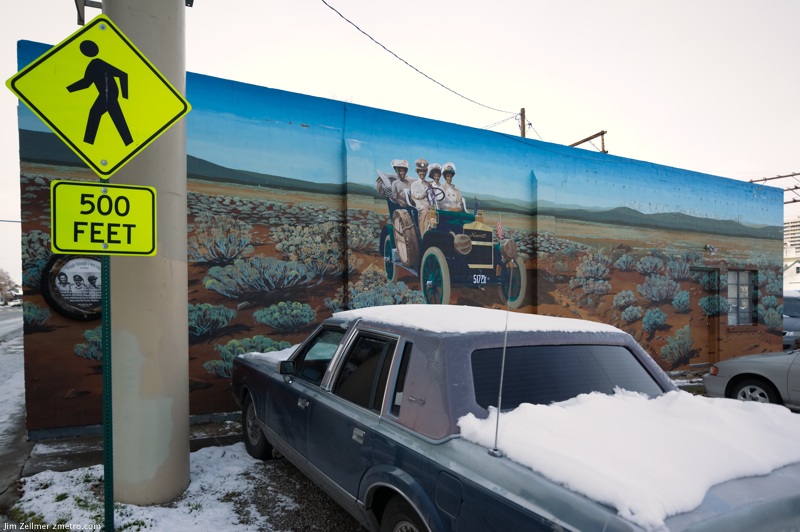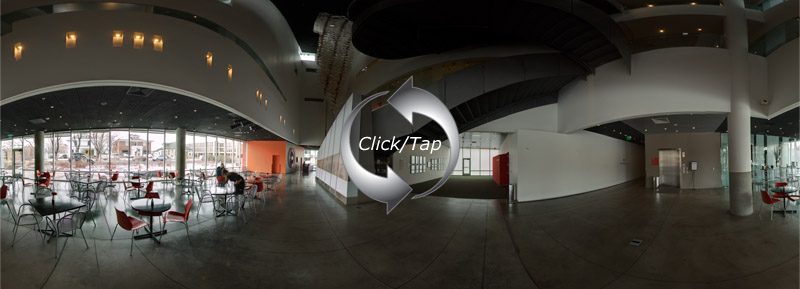2011 marks the 100th anniversary of Chevrolet. During these 100 years the company developed over a hundred different types of cars, vans and trucks. All of those cars, vans and trucks have something in common: they all contain speedometers.
Speedometers are those kind of items you look at thousands of times during your live, without ever really noticing. You notice the speed, not the meter. And if you do notice the meter chances are you don’t realize someone actually designed it. The company probably even did some research beforehand. Research regarding the readability of typefaces, the right size of the numbers and the space between them.
Category: Art
Barnes Foundation Panoramas
The Barnes Foundation, an extraordinary collection of art amassed by Albert C. Barnes, has been one of America’s strangest art museums from the day its doors opened in 1925. Barnes’s unique juxtapositions of paintings and objects were intended to help the viewer learn to look closely at art. The original building, in Merion, Pa., closed at the end of June — the collection will be relocated to a new one in Philadelphia next year — but The Times has created an interactive tour of some of the old museum’s highlights
Panorama: Penn Museum of Archaeology & Anthropology

Click or tap to view this handheld panoramic scene from the Penn Museum of Archaeology & Anthropology. Apologies for a few scene errors.
Visualizing Historical Data, And The Rise Of “Digital Humanities”
All historians encounter them, at some point in their careers: Vast troves of data that are undeniably useful to history–but too complex to make narratively interesting. For Stanford’s Richard White, an American historian, these were railroad freight tables. The reams of paper held a story about America, he knew. It just seemed impossible to tell it.
Impossible to tell in a traditional way, that is. White is the director of the Stanford University Spatial History Project, an interdisciplinary lab at the university that produces “creative visual analysis to further research in the field of history.” (The images in this post are taken from the project’s many visualizations.) Recent announcements on the project site announce “source data now available” (openness is one of the project’s tenets) on such topics as “Mapping Rio,” “Land Speculation in Fresno County: 1860-1891,” and “When the Loss of a Finger is Considered a ‘Minor’ Injury.”
An Interview with Platon
FEW photographers find themselves grasping Mahmoud Ahmadinejad by the hand, facing down Robert Mugabe or eliciting a grin from Binyamin Netanyahu–all within a 72-hour period, no less. Platon, a London-raised and New York-based photographer, is the keen eye behind “Power: Portraits of World Leaders” (Chronicle Books), a book of 150 photographs of world leaders, all of them taken at the United Nations.
This collection is full of surprises and affirmations alike: Hugo Chávez has all the penetrability of an Easter Island statue; Victor Yushchenko could be a friendly school principal; and Muammar Qaddafi is a villain straight out of “Star Wars”. Securing the portraits required tenacity, quick reflexes and the wiles of a fixer. More Intelligent Life spoke with Platon, a staff photographer at the New Yorker, about his adventures in assembling his portraits.
Obituary: The man who gave the world CDs
Norio Ohga, who was instrumental in bringing the world the compact disc and the PlayStation and is credited with building Sony into a global electronics and entertainment group, has died of organ failure aged 81.
“It is no exaggeration to attribute Sony’s evolution beyond audio and video products into music, movies and games, and subsequent transformation into a global entertainment leader to Ohga-san’s foresight and vision,” Howard Stringer, Sony’s chairman and chief executive, said in a statement.
“By redefining Sony as a company encompassing both hardware and software, Ohga-san succeeded where other Japanese companies failed,” Mr Stringer said.
A musician by training, who was a close friend of Austrian conductor, Herbert von Karayan, Mr Ohga led Sony during perhaps its most successful years, as president from 1982 until 1995, when the Japanese electronics maker became one of the most admired companies in the world.
It was under Mr Ohga that the name Sony came to symbolise Japanese manufacturing excellence and to define what was “cool” in the world of electronics – an image encapsulated in the catchphrase, “It’s a Sony.”
Nevada Museum of Art Panorama
Outdoor Art

David Hockney’s friends in art: the iPad and iPhone
David Hockney may be pretty isolated here in Yorkshire, some four hours by train from London, but that’s the way he likes it. Ensconced near the quiet rural landscape he’s immortalized in paintings and watercolors, he has more time not only to draw but to experiment with new ways of making art.
“We think we’re way ahead here,” he confides. “We need this little remote place to be observant about the medium.”
The art-making medium he’s using most often these days is the iPad, brother to the iPhone, which he took up earlier. Whether he’s lying in bed or driving through snow-covered woods, his ever-ready iPhone and iPad are instant drawing pads, always by his side. The electronic duo keeps him in touch with not only his craft but a small group of friends and colleagues who regularly receive his colorful missives of landscapes, flowers, cap or ashtray.
The Hardy 2009-2010 Annual Report Photo
350K PDF. My dusk Hardy photo appears on the cover of their annual report. It was a beautiful evening. Much more on the Hardy Gallery, here.
